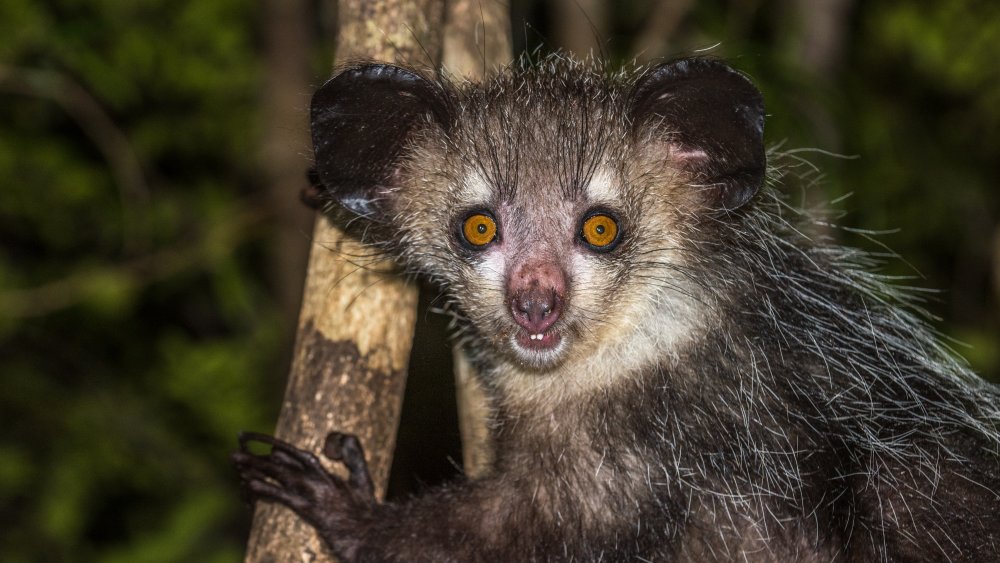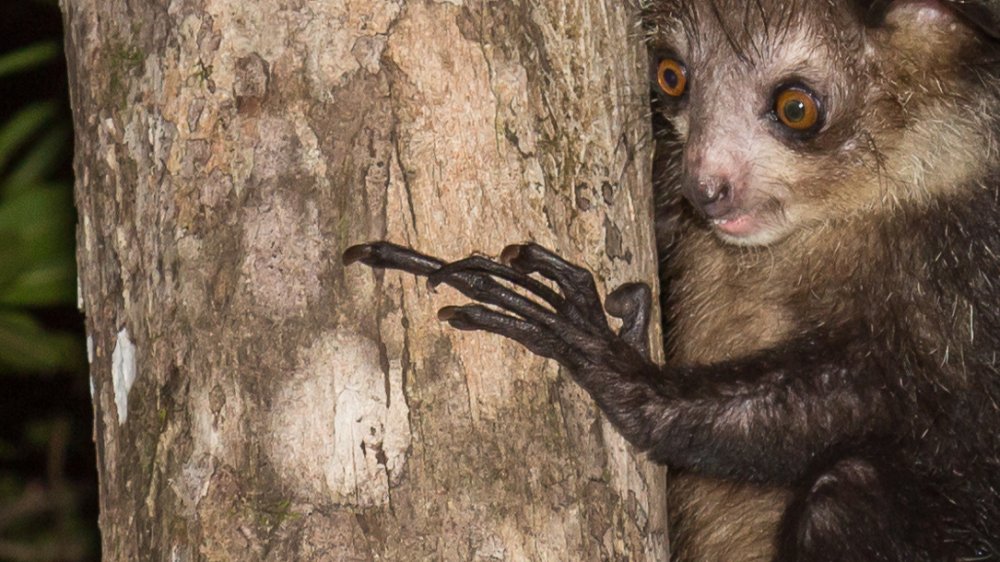The Aye Aye's Nightmare Fingers Just Got Weirder
Just look at that adorable goof. The aye aye is without a doubt one of the weirdest primates that evolution ever concocted. This Madagascar native is the largest nocturnal primate on the planet, but its unique features don't end there. Look at those wide, hypnotic eyes! Those bat-like ears! The better to hear and see you with, apparently. The aye aye is possessed of outstanding night vision, and can actually echolocate just like an actual bat. The facial features are, admittedly, pretty cute, but this lemur's other distinguishing feature — those long, Freddy Kruger-like fingers — is the stuff of nightmares.
The aye aye has an extended third finger, perfectly placed to epically flip the bird. These overlong digits serve a highly-specialized function. The aye-aye uses them to tap against the wood of hollow trees to generate an acoustic pulse that helps them locate larvae for food. So far so good, but after they find a cache of scrumptious grubs, the horror movie begins. The long finger contains an extra joint with the ability to swivel like a shoulder in its socket. This helps the aye aye effortlessly fish larvae out of all those hard-to-reach places.
Great at flipping the bird, terrible at hitch-hiking
As if that wasn't enough, Adam Hartstone-Rose, Associate Professor of Biological Sciences at North Carolina State University, recently discovered yet another strange feature of the aye aye anatomy that sets these paws apart from other primates. They apparently have a previously undiscovered sixth finger on each hand. Dr. Hartstone-Rose describes this structure, made from cartilage and bone, as a "pseudothumb". These almost-thumbs likely evolved to help the aye-aye manipulate objects and climb trees. It may not be as dextrous as the actual thumbs found in Great apes and Old World monkeys, but hey — it has its own fingerprint!
You might wonder how it's possible for an entire digit to go undiscovered for so long in such a well-described species. Dr. Hartstone-Rose agrees that it's "rather mysterious." The appendage is easy to miss since it spends most of its time embedded in the fleshy part of the aye aye hand. It's also mightily overshadowed by its bark-thumping, super-jointed siblings from the other side of the palm.

